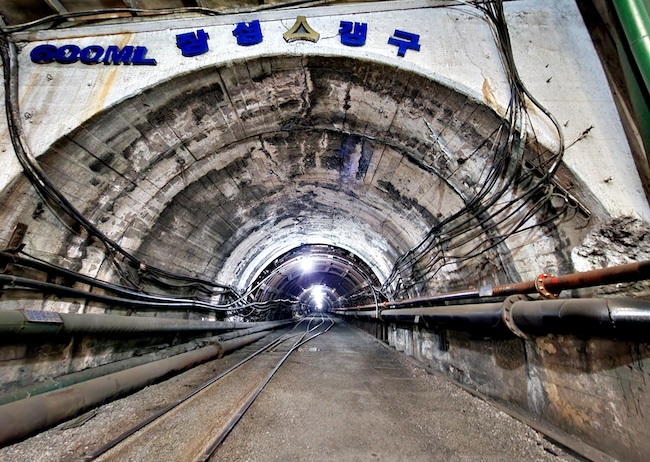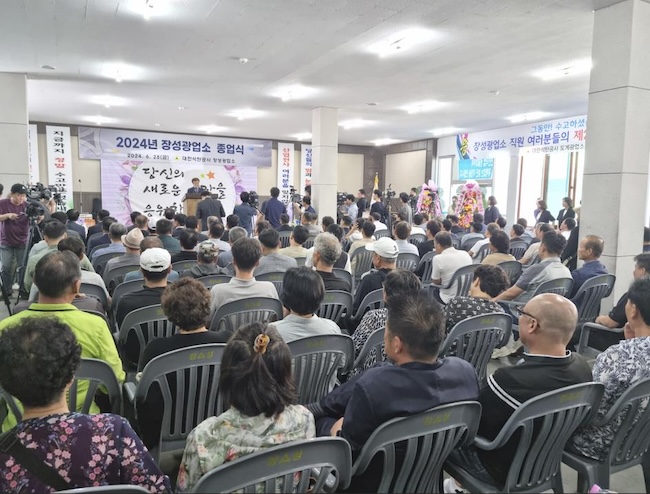SEOUL, Jul. 3 (Korea Bizwire) – The Jangseong Mine in Taebaek, Gangwon Province, South Korea’s largest coal production site, permanently closed its doors on June 30. This historic shutdown marks the end of an era for the nation’s coal mining industry, as the government’s mine closure policy takes full effect, transforming the once-bustling site into a relic of the past.
On June 17, the Korea Mine Rehabilitation and Mineral Resources Corporation (KOMIR) held its 2024 Mine Closure Deliberation Committee, designating the Jangseong Mine, operated by Korea Coal Corporation, as a target for closure support. The Korea Coal Corporation officially shut down the mine on June 30.
The Jangseong Mine, the only coal mine in South Korea with two vertical shafts, was unparalleled in size. With coal reserves of 175.92 million tons, it accounted for 12.1% of the nation’s total reserves.
The mine’s history dates back to 1933 when it was first identified by Japan. Samcheok Development Co., Ltd. began its development in April 1936. Spanning an area of 4,978 hectares (about 49 square kilometers) across 16 mining lots, the site has played a crucial role in South Korea’s industrial development.
Throughout its history, the Jangseong Mine has produced a total of 94,066,000 tons of coal, with peak production reaching 2,275,245 tons in 1979. However, annual production has steadily decreased, with only 67,000 tons produced in 2023.
In the 1980s, the mine employed over 6,000 workers. At its closure, that number had dwindled to around 400 employees.
The Korea Coal Corporation plans to close the Dogye Mine in Samcheok next year. If this plan proceeds, there will be no government-operated coal mines left in South Korea, with only the privately-run Kyungdong Mine in Samcheok remaining operational.
The mine’s closure has also brought to light the severe employment crisis already gripping the region. The shutdown is expected to realize an estimated 3.3 trillion won in economic damage to the Taebaek area.
According to the Gangwon Special Self-Governing Province and the Gangwon Research Institute’s Coal Mining Region Development Support Center, 43.4% of workers in Taebaek earn less than 2 million won per month, which is close to minimum wage. This figure is significantly higher than in other major cities in Gangwon Province, such as Chuncheon (26.5%), Wonju (31.7%), and Gangneung (32.5%).
Only 6.4% of workers in Taebaek earn more than 3.6 million won per month, the lowest proportion in the region and just one-fifth of the rate in Seoul’s Gangnam district (28.1%).
The job shortage in Taebaek is also critical. Out of 22,000 employed Taebaek citizens, only 18,000 work within the city, forcing 4,000 to commute to other areas for work. Taebaek’s labor self-sufficiency rate is 81.8%, the lowest among Gangwon’s 18 cities and counties.
The Jangseong Mine accounted for 13.6% of Taebaek’s Gross Regional Domestic Product (GRDP). It paid annual wages of 197.5 billion won, generated about 60 billion won in household consumption, and contributed 5 billion won in local taxes yearly. The mine also created a production inducement effect of 2.2 trillion won annually.
Secondary economic impacts, such as business closures, are expected to be substantial. Population outflow is also anticipated as laid-off mine workers may leave the region. The province warns of annual losses of 16 billion won in transportation and warehousing, 6 billion won in coke and briquette manufacturing, and 4.6 billion won in finance and insurance industries.
Given these dire predictions, the provincial government is urgently calling for the national government to designate Taebaek as an “employment crisis area.” The Ministry of Employment and Labor began on-site inspections of the Taebaek area on July 1 and is expected to decide on the designation before September.
Image credit: The Korea Mine Rehabilitation and Mineral Resources Corporation / photonews@koreabizwire.com









